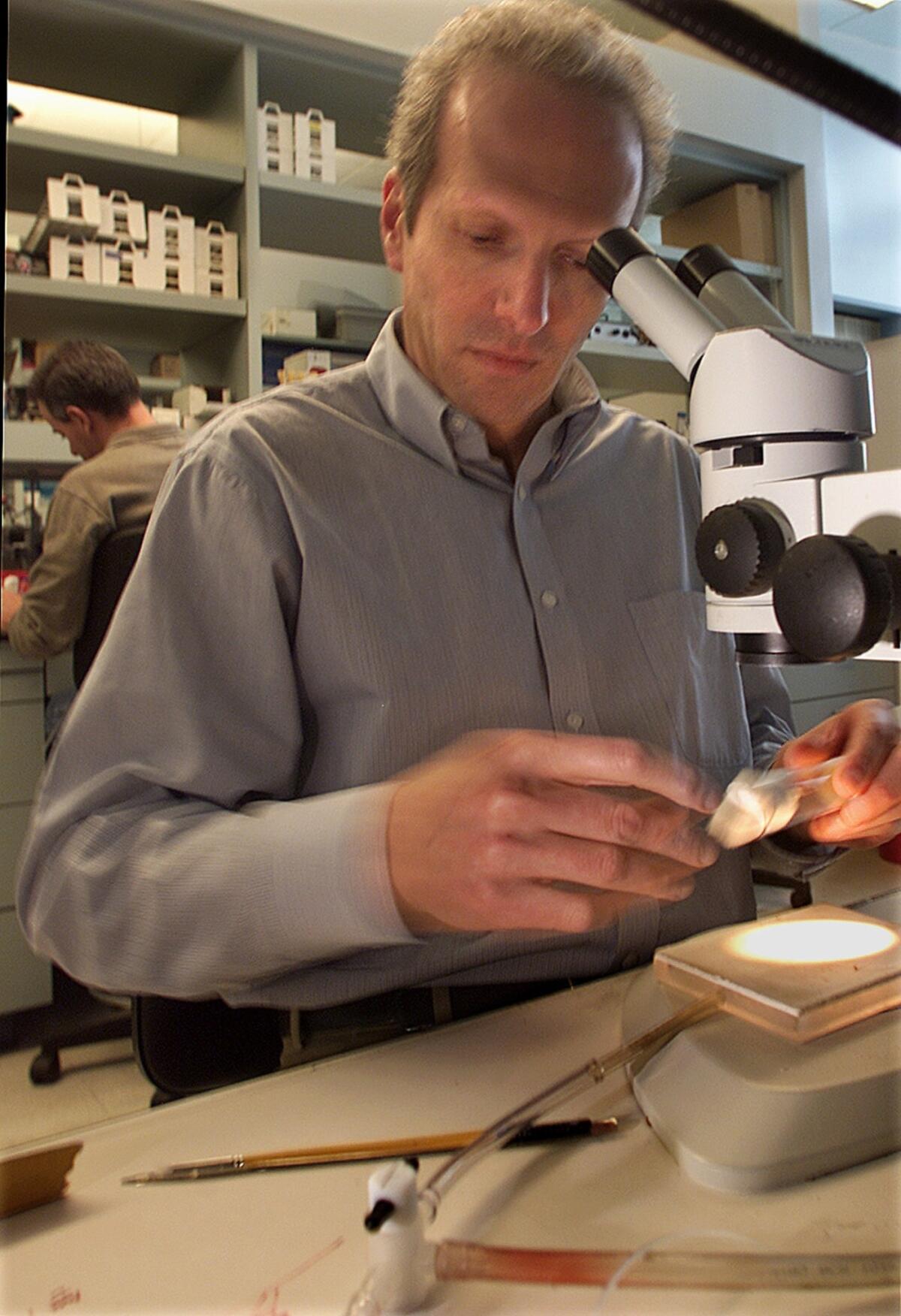Q&A: California follows federal lead with its own brain-mapping initiative

It took 40 scientists, tens of millions of dollars and several decades to create a comprehensive atlas of the brain of the lowly fruit fly.
So Ralph Greenspan, whose neuroscience career started with fruit fly experiments, understands that $2 million from Sacramento won’t be enough to map the human brain, which has about 85 million times as many neurons.
But in a state that only recently crawled out from years of budget deficits and recession, the decision to set aside money for brain research carries symbolic weight: It’s a wager on California’s ability to turn gray matter to green matter.
The new California Blueprint for Research to Advance Innovations in Neuroscience, or Cal-BRAIN, is part of the state budget signed by Gov. Jerry Brown last week. It complements President Obama’s $100-million BRAIN Initiative to decode the human brain the way a previous generation of scientists decoded the human genome.
If they sound similar, there’s good reason. Greenspan, director of UC San Diego’s Center for Brain Activity Mapping and associate director of its Kavli Institute for Brain and Mind, is among a small group of scientists who had their fingerprints on both.
Greenspan spoke with The Times this week about the origins of the brain mapping initiatives and where the efforts are going.
How did this state funding effort get started, and how does it relate to the Obama BRAIN Initiative?
After the Obama initiative was announced, we were thinking about how to approach the state, knowing that California has done things like this in the past. Then, from out of the blue, I get an email in the middle of July from the Senate majority leader’s office in Sacramento saying that they’re interested in the BRAIN Initiative and they wanted to talk about it.
They didn’t know how much money they would have available for it in this first year of the California surplus, but they decided they wanted to do something. They wanted to express an intention that this was something really valuable.
Were you specifically seeking money for UCSD?
Not at all. It was proposed as an open grants program for technology development throughout the state, where the best projects will get funded. It’s open to any research institution in California.
Who decides where the money goes?
The way it’s written is that the University of California has to set it up in some fashion. And we’re waiting to see what they’re going to do.
Will researchers have to propose work that relates directly to producing a map of the brain, or is this open to general neuroscience research?
That hasn’t been decided yet for the state program. The funds become available on July 1.
If you look at the federal grants that are coming out, they are generally for ways of making new technology that can aid that mapping process in some fashion or other. And it’s rather broadly defined. You can’t do it all in one gulp. You have to develop tools, and developing tools can be a step-wise process.
Convincing politicians of the benefits of basic scientific research can be difficult. How did you sell the notion of mapping the brain?
It will have great long-term medical benefits, as well as a lot of potential to increase our scientific understanding.
But one of the strongest arguments we made from the very beginning is that there’s a really good history of economic stimulation from technology development. To map the brain, you need to develop technologies, so we sold it in part based on the fact that there will be economic benefits along the way.
What examples did you use to make your case?
There are three instances where rapid advances in technology have occurred. All of them are cases where we didn’t really know how we were going to do what we set out to accomplish.
The first was the moon shot in the 1960s. The second was the war on cancer — we owe all of modern molecular biology technology, and the industry that grew up as a result, to the basic science funding of the war on cancer. The last case was the Human Genome Project, which helped produce the huge DNA sequencing industry.
If Obama has already set aside $100 million for brain research, why does California need its own program?
California is really ideally suited to lead in this effort — not only because we have so much scientific talent here, but also because we have a better culture of people working collaboratively on things than is true elsewhere in the country. I really think that gives us a huge advantage. It’s a culture of innovation and a culture of collaboration, and that is tremendously powerful.
If you were to give a one-year progress report on the federal BRAIN Initiative, what accomplishments would you highlight?
It has only just begun. There was a long process of the governing agencies figuring out what they wanted to solicit proposals for, and now they’ve started to fund them. People have barely begun doing the work on those proposals. So it’s way too early to say.
This interview was edited for clarity and length.
Twitter: @LATsciguy







